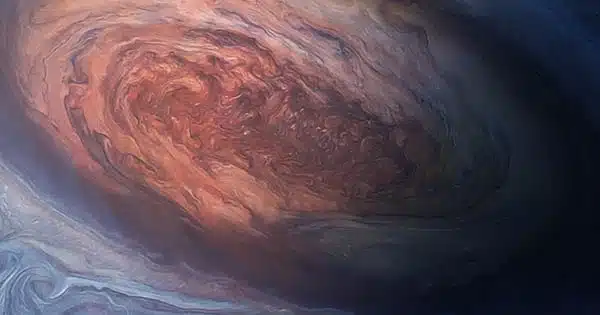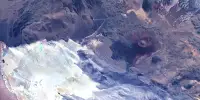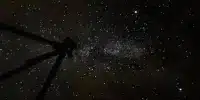There is turbulence all around us. It’s in a latte’s swirl of coffee and cream, unfurling along airplane wings and automobile sides, churning the blood in your heart when the valve clicks shut. We still don’t understand all of its rules.
Part of the problem is that physicists usually start by isolating the phenomenon from its surroundings to analyze it—but stirring a cup means the spoon is always inside it, influencing the movement of the liquid. There hasn’t been a technique to isolate the turbulence on its own.
A group of University of Chicago scientists, on the other hand, has developed a method for creating confined turbulence in a tank of water. They blow loops with a ring of jets until an isolated “ball” of turbulence forms and persists.
“It came as a surprise to us,” said physicist Takumi Matsuzawa, the first author of the study, which was published in Nature Physics. “It’d be like sitting calmly in a field with a picnic and watching a storm raging 50 feet away,” said Prof. William Irvine, the study’s corresponding author.
They expect that the discovery will lead to fresh research into turbulence.
‘No one could have predicted this.’
Turbulence, or the chaotic movement of a poorly mixed liquid, is an old problem. “It’s often quoted as one of the big open questions in physics,” Irvine added.
Scientists have made strides in defining the behavior of an “idealized” state of turbulence in recent decades. That is, turbulence without the distorting variables of limits, strength, or time. However, there is still much to learn about comprehending real-world turbulence.
“Turbulence appears all around us, but it continues to elude what physicists consider a satisfying description,” Irvine added. “For example, can I predict what will happen next when I poke this area of turbulence?” No, it does not. “Not even with a supercomputer.”
The existence of confounding variables in trials was one of the major issues. Turbulence can be created by blasting a quick jet of water through a pipe or churning a paddle in a tank of water, however, the turbulence always brushes up against the container walls and the stirrer, affecting the results.
Matsuzawa, Irvine, and their colleagues had been conducting experiments with water tanks to create “vortex rings”—similar to smoke rings, but in water. When they attempted to combine them to create turbulence, the energy was frequently reflected back to them before dissipating.
But something strange happened when they came upon a certain configuration—a box with eight corners, each holding a vortex ring generator.
When they fired rings that met in the center repeatedly, they noticed a self-contained ball of turbulence form distant from the tank’s walls.
This was a breakthrough in and of itself: “No one knew this was even possible,” said Matsuzawa, a graduate student in physics. “When you mix your milk into your coffee, you can only get one or two swirls in before it becomes completely mixed.” It’s extremely astonishing that we can keep it contained.”
Matsuzawa noted that a freestanding ball of turbulence allows scientists to track its properties considerably more precisely utilizing lasers and several rapid cameras. This contains its energy, helicity (how knotted or “knotty” the loops are), impulse, and angular impulse (the fluid analog of momentum and angular momentum).
Furthermore, users could experiment with it by changing the parameters. They may choose whether the helices they sent in spun clockwise or counterclockwise. They could alter the helicity of the rings to see how the turbulence changed over time, or they could change the amount of energy going in, or they could stop adding rings and watch the turbulence diminish.
“How does turbulence go away?” How does it grow? What exactly does it remember? How is energy distributed between scales? Is there a variety of turbulence? “There are many questions we could ask, and this is a unique setting in which to do so,” Irvine explained. “I really hope that this can help open up a new playground in the field.”














